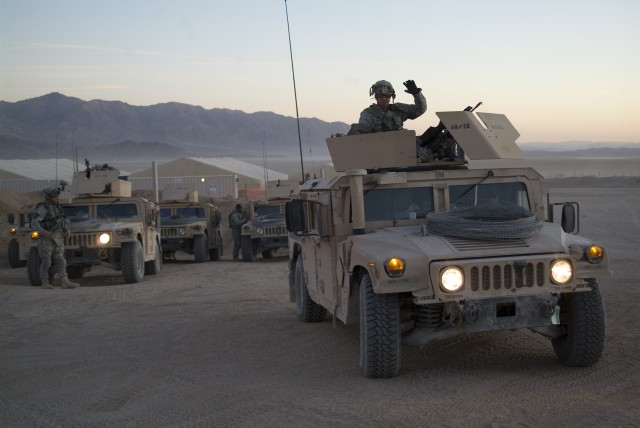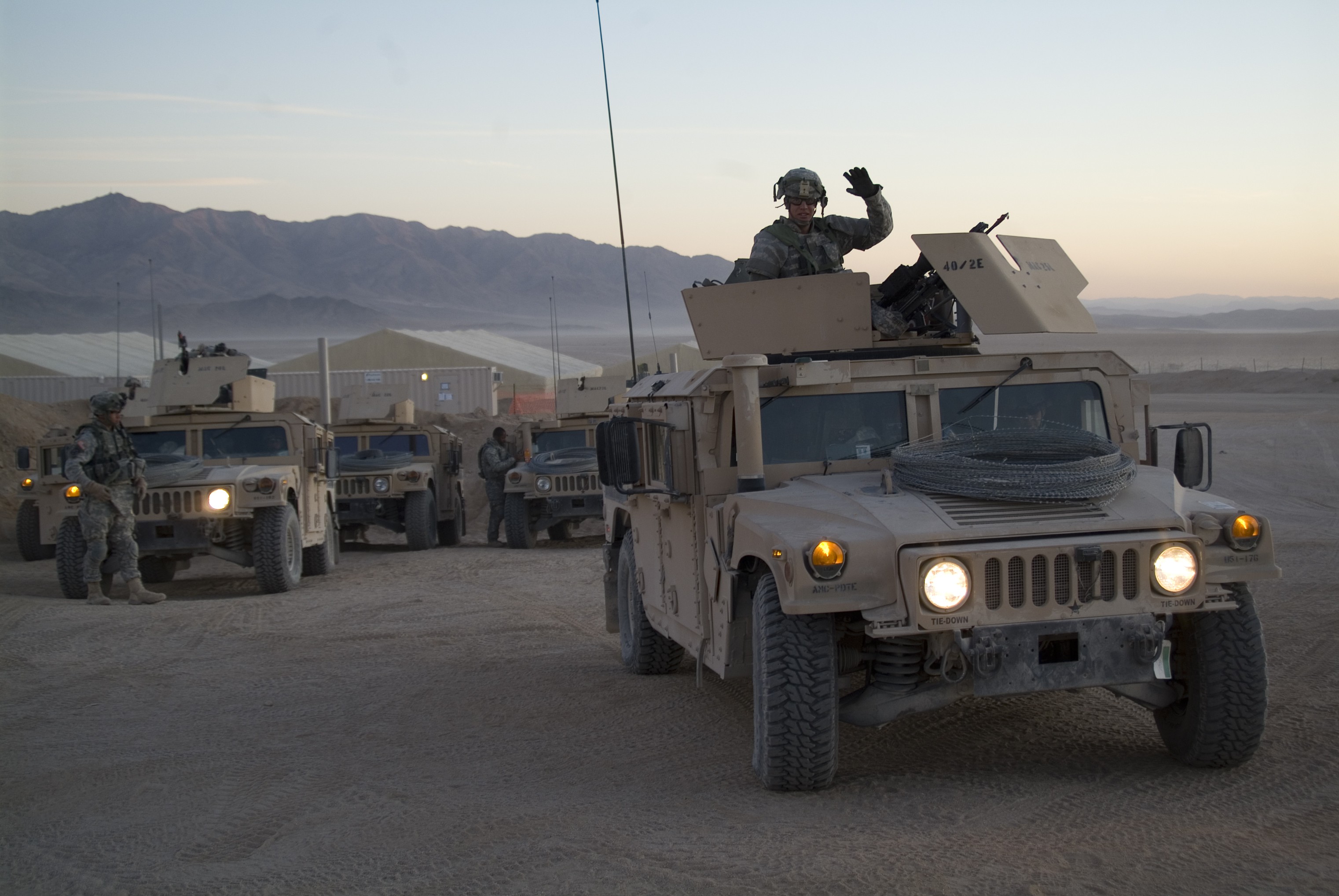
WHITE SANDS MISSILE RANGE, N.M., Dec. 3, 2009 - Soldiers with the 2nd Engineer Battalion trained for a life saving mission the week of Nov. 12 at the National Training Center at Fort Irwin, Calif.
Soldiers from the 40th Mobility Augmentation Company are conducting training missions in skills such as route clearance in preparation for deployment. The company, along with much of the rest of the 2nd Engineer Battalion took part in an extensive and immersive training exercise at the National Training Center in preparation for a deployment early next year. "(The training) has simulations and effects that replicate pretty closely what we'll see when we're deployed," said Lt. Zach Martin, a platoon leader with the 40th MAC.
While the MAC was originally intended to clear obstacles and to assist with the mobility of other units on the modern battlefields of Afghanistan and Iraq, the 40th MAC's mission has focused more on minimizing the threat IEDs pose to service members and civilians. Carefully driving the routes before the convoys, the Soldiers search for IEDs using advanced mine detection systems and the sharp eyes of their Solders. They scout ahead making sure that the roads are safe.
Equipped with specialized armored vehicles, like the Husky mine detection vehicle, the Buffalo mine protected vehicle, and armored Humvees, the Soldiers from the 40th MAC scout ahead of other units and search the various roads and convoy routes for possible IEDs or other insurgent activity. When a route clearance team comes across an unmarked or civilian vehicle they often have to expect the worst. They have to move quickly to get into a tactically advantageous position in case the vehicle turns out to be insurgents preparing an IED or ambush. "Drive it like you stole it," Sgt. Ricky Burk, a team leader with the 40th MAC, often shouts to his drivers to encourage them to drive more aggressively and build their confidence in their abilities and their equipment.
The missions can be very tough for the Soldiers, as they will not always find an IED, and sometimes will have to search miles of road at a time. The long hours of scanning a road can be tiring, and the Soldiers have to stay alert to complete their missions. "When I usually get tired I sing to myself, but usually I'm too wrapped up searching my area," said Spc. Israel Alvarez, a combat engineer with the 40th MAC. Making a tedious mission all the more challenging the Soldiers can also be called upon to run reconnaissance and area denial missions. Like a wagon train, the Soldiers circle their vehicles to set up observation posts, sometimes waiting late into the night to prevent insurgents from sneaking through an area or moving in and placing IEDs.
This mission is replicated at the National Training Center as close as possible to the mission these Soldiers will have to face once they are deployed. In addition to the harsh terrain, the Soldiers must also contend with training personnel playing the part of everything from Iraqi police and army to Al Qaeda insurgents. In the case of the 40th MAC, the Soldiers playing this role are also trained combat engineers. "We get our engineers to run route clearance with the units coming in to train, so we get to flip flop on the different jobs out here in the field," said Sgt. David Jarquin, a combat engineer with the 58th Combat Engineer Company, who plays the role of an Iraqi Soldier at NTC.

Social Sharing